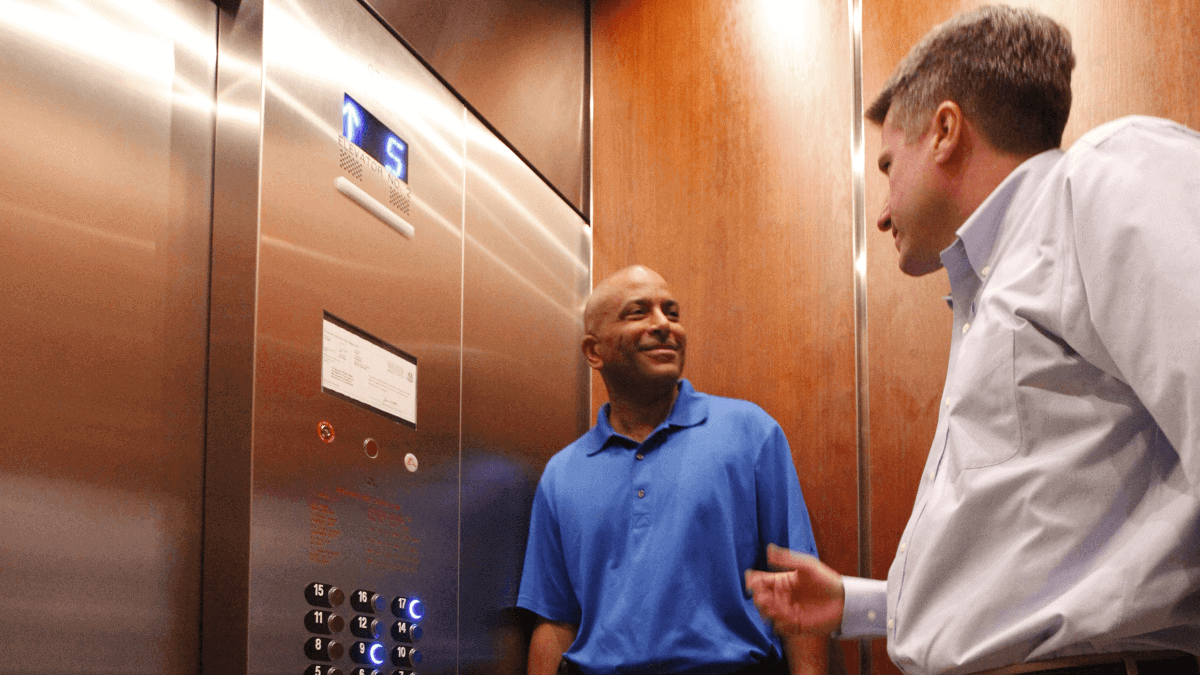5 steps to take if your elevator stops working
While getting stuck inside an elevator rarely happens, we’ve put together some tips on what to do if the situation occurs. Elevators can stop, for example, when there are power outages, when passengers misuse equipment or when the elevator has a fault.
If the elevator has stopped, it is important to follow these steps:
- Remain calm and do not attempt to leave the elevator cabin without first being authorised to do so by a qualified engineer or the fire brigade.
- To request assistance, use the elevator’s emergency button, intercom or phone.
- Keep your distance from the door at all times and do not try to force the doors open.
- Remember that the elevator has air circulation openings, so there will be no limit on available air inside the cab.
- Wait for qualified assistance to arrive. Only an engineer, the fire brigade or a person trained in passenger release should perform a rescue, if one is deemed necessary. Do not attempt to rescue passengers in any way!
If you are standing outside of the elevator and realise that it has stopped operating, do not attempt to rescue the trapped passengers! Even if driven by good intentions, this can lead to a serious accident.
In this situation, it is best for a “trapped” passenger to remain within the cab until trained personnel can remove them. Door restriction devices prevent the passenger from opening the car doors. Therefore, Otis recommends the following procedure in the event a passenger becomes trapped in an elevator:
- Communicate with the passenger(s), reassure them that they are safe as long as they do not panic or try to open the doors, and that there is plenty of air in the cab.
- Stay in communication with them until they are rescued. Communication can be by either the standard communication system within the cab or by communicating verbally through the doors.
- Ask the passenger(s) to push the door open button, as sometimes the elevator is at floor level and the door will open.
- Place a service call to your elevator service provider. With Otis, this would be Otisline, and inform the Otisline operative that people are trapped in the elevator. Entrapments receive priority service. (Remember to give the Otisline operative a phone number if they need to contact the building.)
- Do not call 999 unless it is an emergency. There have been instances where considerable damage was done to an elevator by non-elevator personnel attempting to remove a passenger from an elevator when the situation was not an emergency.
British Standard EN81-20 requires that the hoistway doors be equipped with an “emergency unlocking device,” which can be operated with a special key. That key will open the hoistway (external) doors and permit the removal of trapped passengers. This key should only be used by trained personnel
As you can see, elevator equipment has many built-in safety features that reduce the risk of personal injury and property damage in the event of malfunctions. However, building staff still play a vital role in directing occupants to safety, monitoring equipment, and operating controls that initiate emergency features.
Elevator breakdown stops are usually annoying and inconvenient. While elevators are extremely safe and reliable, sudden stops are always a possibility. We want to make it clear that elevator breakdown stops don’t represent any kind of risk for users and owners.
Safety concerns are, and have always been, one of the pillars of Otis’ operation. Along with Quality and Ethics, Safety is one of the Otis Key Absolutely. To read more about how we focus on Safety within our business, click here.



